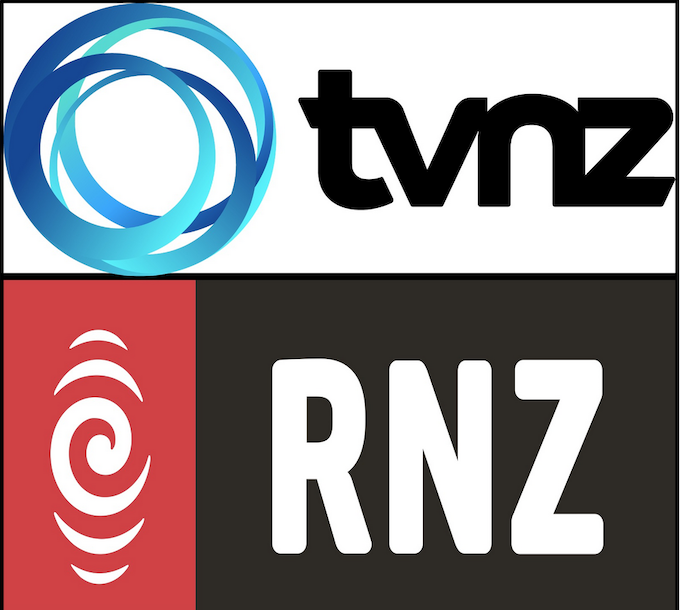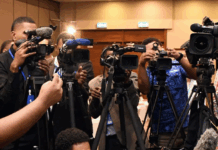
ANALYSIS: By Gavin Ellis of Knightly Views
The proposal for a new entity to replace Television New Zealand and RNZ has two fundamental flaws that must be fixed if it is to gain the public’s trust.
The first flaw is the assumption that an existing legal structure — the Autonomous Crown Entity — is an appropriate form of governance. The second is that it has provided inadequate protection from political interference. The two issues are related.
Let me say at the outset that I support the restructuring of public service media. It is an idea whose time has come. It is an opportunity to create, almost from the ground up, a public organisation designed to live up to a digital incarnation of BBC-founder Lord Reith’s dictum that public media should inform, educate and entertain (now, however, in a creative and clever mix).
My concern lies in the need for this new entity to demonstrate from the outset that it will be free-standing and free from influence. By treating its formation little differently from a stock-standard Autonomous Crown Entity (ACE) into which existing organisations are dropped, the government is sending the wrong signals. From Day One (i.e., right now) it needs to be treated very much as a special case.
Let’s not lose sight of what is possible here: The creation of a ground-breaking structure that can set new standards for public service media in the digital age – if it is born out of independent thinking, creativity, and wisdom.
And let’s not forget why it is vital that it succeed in that aim. Public trust in the institutions of democracy and a free society are being systematically undermined. We need to look no further than the darkly manipulated “protest” in front of Parliament.
Stirrers wanted the prime minister and journalists lynched and violent “protesters” set fires and threw paving bricks at police. They were supported throughout by a much wider social media narrative that neither politicians nor the media could be trusted.
Public trust in media eroding
Public trust in media is already on the way down. AUT’s Centre for Journalism, Media and Democracy polled trust in media last year and found it had declined across all four industry-wide metrics it had measured in 2020. RNZ and TVNZ remain the most trusted brands but both declined year-on-year. So, too, did all media included in the previous survey.
There is a real need for media institutions in which the public has trust and the JMaD studies point to public service media being at the pinnacle of that structure.
I have no doubt that the Minister of Broadcasting and Media, Kris Faafoi, is well-intentioned. As a former journalist he is only too well aware of the importance of trust and of the need to protect, nurture and champion media independence. Whether his cabinet colleagues have the same set of imperatives is harder to judge.
However, the restructuring requires a longer view than what might happen around the cabinet table over the next few months. We need to be concerned that the structure which emerges is not only fit for purpose now, but will endure for decades and be capable of withstanding winds of political change that on a global scale are showing more negative than positive signs.
In other words, it must be robust enough to survive not only known risks but also some conceivable unknowns: We had a Robert Muldoon, so could we have a Donald Trump?
Unfortunately, the announcement last week provides a less-than-reassuring beginning. The cabinet go-ahead was sparse on structural and operational detail. It did speak of a charter and proposed legislation that will contain a much-vaunted guarantee of editorial independence from ministerial control. However, that is undermined by other planned moves and much of the potential damage could be done even before the new structure is up and running.
Significantly, control of the governance of the implementation phase of the restructuring is one area of the cabinet paper and supporting documents in which there is real detail. Absence of detail elsewhere is explained away by saying these are matters for the Establishment Board to decide.
Seen as the architect
The draft terms of reference for the Establishment Board state it will be responsible for overseeing the detailed organisational design of the new entity and the transition to the new structure. In other words, it is to be seen as the architect. That was certainly the inference in Kris Faaoi’s announcement last week.
Yet the Establishment Board is precisely where the Minister (and his Cabinet colleagues) and the Ministry for Culture and Heritage have a potentially high level of influence.
The Establishment Board is expected to stay aligned to any cabinet decisions and is responsible for ensuring it “progresses government policy” and meets the minister’s objectives.
All members (up to nine) are to be appointed by the minister, who will also appoint the chair. The minister can terminate any member’s term before the expiry date and there is no requirement for him to state cause.
The board will not have its own staff but may ask the Ministry for Culture and Heritage – which will provide the secretariat — to appoint people to provide specialist or technical advice. MCH will also procure other services on the board’s behalf and its chief executive will decide what functions it will delegate to the board. Meanwhile MCH will continue to provide advice directly to the minister.
The Establishment Board will, according to the terms of reference, operate on a consensus basis — not a majority vote — and where it can’t reach consensus “the chair will advise the minister of the difference of opinion”. That begs the question: Does the minister effectively have a deciding vote?
He certainly has a tight hold on what the Establishment Board says in public. The section in the terms of reference relating to the Establishment Board’s relationship with the minister is devoted almost entirely to public statements. There can be “no surprises” (no surprise there) and the chair is the sole spokesperson.
The minister is to be informed of any public comment “either prior to, or as soon as possible after comment is made”, and all press releases must be sent to the minister in advance.
Multiple avenues for influence
All of this suggests to me that both the minister and the ministry have multiple avenues through which they can influence the way the new structure is put together.
I freely admit there is good reason for liaison. For example, the early activity of the board will take place while the entity’s empowering Act and other law changes are working their way through the legislative process. The board’s thinking on the new entity should be reflected in that legislation and, if it isn’t, we might question why it is not.
However, there are equally good reasons why the Establishment Board should be seen to be independent. If the minister deflected questions on detail by saying they were matters for the Establishment Board, then let it be so.
The way it now stands, it looks (as my betting old dad would say) as though the government is trying to have a quid each way. Hedging bets is not a good way to begin the trust-building process.
Step one in that process should be an unequivocal statement from the minister that the Establishment Board does, in fact, have autonomy and, so long as its actions support the aims of the new entity, it will not be subject to ministerial or ministry direction. It should also have the power to appoint its own advisors.
Then there is the new entity itself. I was frankly surprised that work by a Chief Executives Working Party (to which I was an advisor), a Business Study group, and then a Business Case Governance Group did not produce a unique structure for what will be a unique organisation. Specifically, I expected to see the strongest recommendations for iron-clad protections, and I expected to see such protections accepted by cabinet. That hasn’t happened…yet.
Instead, cabinet has accepted the option of an Autonomous Crown Entity with a traditional minister-appointed board, with two board members appointed in consultation with the Minister for Māori Development. The only aspects that separate it from a stock-standard ACE is a charter (to which I’ll return) and a section that protects the entity’s editorial independence. As it stands, that section is less prescriptive that either the Television New Zealand Act or the Radio New Zealand Act.
Statement of good intentions
Cabinet has approved what is titled a “proposed basis for charter structure” that is little more than a statement of good intentions. Admittedly, no charter should be so detailed that it limits initiative or the ability to respond to changed circumstances.
However, what is missing from this document is an overarching statement that the organisation as a whole will be predicated on autonomy and independence. Instead there is a clause stating that the organisation itself should “demonstrate editorial independence”.
Also missing — or among the 12 redacted sections of the cabinet paper relating to financial implications — is how the new entity will be protected from the cudgel that governments here and elsewhere have used to bring recalcitrant public broadcasters to heel. That big stick is control of the purse-strings.
It is vital that there be some certainty of funding, both for operational reasons and to demonstrate to the public that the entity doesn’t kowtow to government in order to pay the bills.
We do not know what the core level of public funding will be, the term over which it will be paid, and who will set it. Funding, of course, is ultimately in Parliament’s hands and, as we’re talking taxpayer money, that is as it should be. However, it still needs protecting in some way from a vengeful ruling party – and here I want you to think forward to that Trump figure in our possible future. Multi-year funding, for example, is a pre-requisite.
There is still time to put right the governance shortfalls in the proposal.
The first step should be for the government to accept the need for an additional tier of governance that sits, effectively, above the board. Not to second-guess it, but to ensure that it meets the spirit of the charter under which the entity will operate, to review proposed budgets and Crown appropriations, and to act as a shield against external interference from government, the ministry or elsewhere.
Why Guardians are needed
The entity needs Guardians. RNZ’s board is described as guardians but they are effectively the equivalent of company directors (even if they are absolved from the need to turn a profit). The new entity will need something more akin to the Guardians of Lakes Manapouri, Monowai, and Te Anau that were established by Norman Kirk to protect those waters against detrimental effects from the hydro power scheme.
The Guardians of Public Media should, however, differ from that precedent in several fundamental ways.
First, they should not be appointed by a minister but by Parliament. In fact, the board of the entity should be similarly appointed, as is the case with a number of European public service media.
Second, they should produce an annual report, made not to a minister but to Parliament. It should include a judgement on funding adequacy and a review of the entity’s relationship with the minister, the ministry, and government as a whole.
This annual report should replace the proposed yearly review by at least four government departments, but not annual reports to Parliament by the entity itself.
The cabinet paper proposes a five-yearly review of the charter by Parliament. That can be read as a review by the politicians in power. Therefore any parliamentary review should be preceded by a Guardian review of the charter’s fitness for purpose and it is that review that should go to the House. That way, if a ruling party wants to mess unilaterally with the charter, it will be seen for what it is. In addition, each year the guardians should review performance against charter objectives, separate from any assessment by the entity itself.
They should also act as a bulwark against interference in decisions relating to any content produced or disseminated, and that is not limited to news. A shiver still runs down the spines of old broadcasters at the mention of Robert Muldoon’s undoubted role in the decision in 1980 not to screen the drama Death of a Princess to avoid upsetting the Saudi government.
More protection for news
News and current affairs, however, require more protection and guarantees of autonomy than other forms of programming. That was not apparent in the documents released last week. There must be explicit prohibitions — in legislation and in the charter — on both external and internal interference in news operations. A minister is not the sole potential source of pressure. Officials, board members, commercial staff, and management of the entity must be held at arm’s length.
Legislation should also preclude the chief executive from also holding the position of editor-in-chief. Paul Thompson holds both positions at RNZ and has done so without controversy, but the new entity will be both much larger and will be a hybrid of commercial and non-commercial functions.
I believe all of the entity’s news and current affairs functions and decision-making, including the position of editor-in-chief, must be kept within that department if autonomy and independence are to be seen to be real.
Details missing from last week’s announcement and document release created frustration but there may be a brighter side. If the detail has yet to be worked out, there is still time for Kris Faafoi, his cabinet colleagues, his ministry, and the Establishment Board to get it right.
Dr Gavin Ellis holds a PhD in political studies. He is a media consultant and researcher. A former editor-in-chief of The New Zealand Herald, he has a background in journalism and communications – covering both editorial and management roles – that spans more than half a century. Dr Ellis publishes a blog called Knightly Views where this commentary was first published and it is republished by Asia Pacific Report with permission.
- Read the full Gavin Ellis article here:
https://knightlyviews.com/2022/03/15/fundamental-flaws-in-public-media-plans-call-for-big-fixes/







































